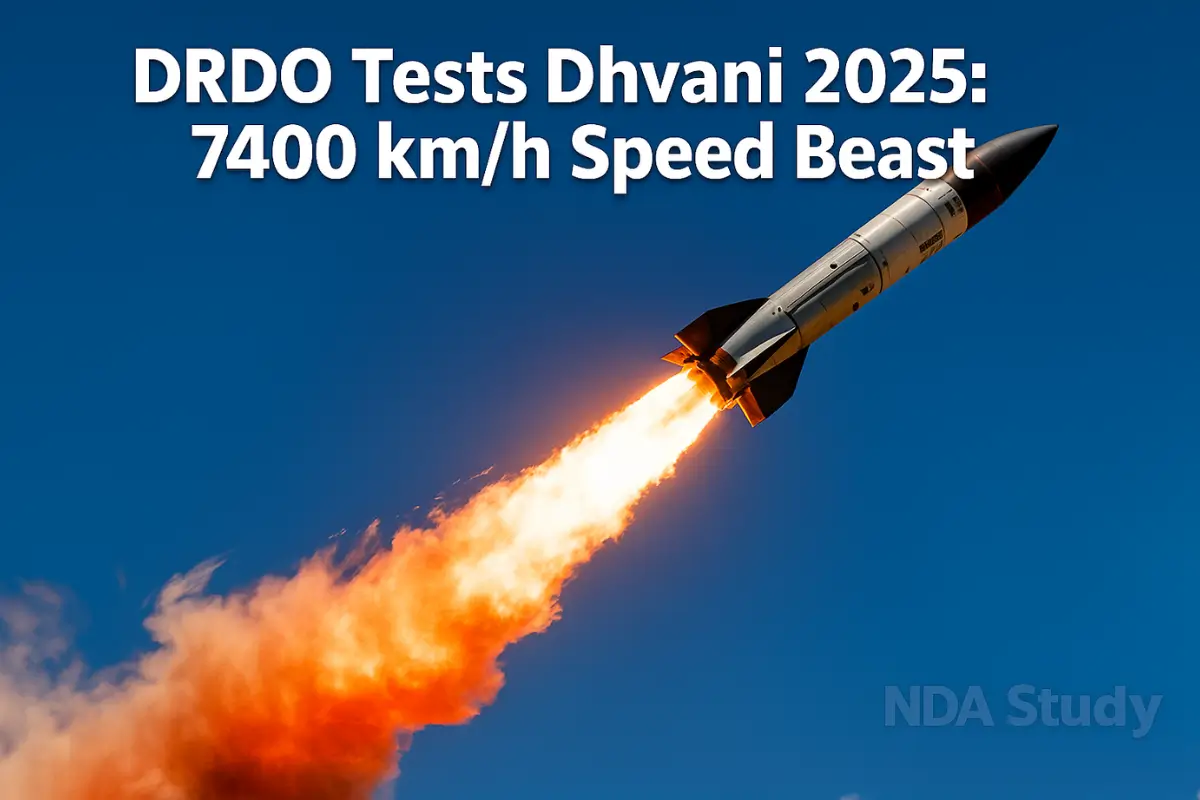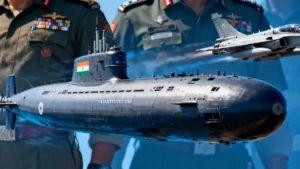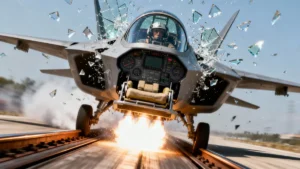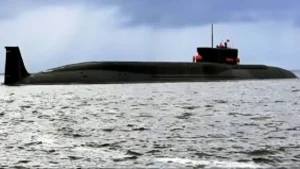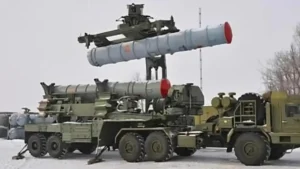India’s hypersonic weapon Program is set for a landmark moment as DRDO’s Dhvani Hypersonic Missile Test 2025 approaches, promising to redefine aerial strike capability. In the first few weeks following the announcement, the DRDO Dhvani test generated widespread excitement by touting a blistering top speed of 7,400 km/h—nearly Mach 6.2—surpassing current benchmarks. This breakthrough follows years of parallel development alongside the BrahMos series, with the new scramjet-powered Dhvani designed to deliver rapid, precise strikes deep into adversary territory.
The Defence Research and Development Organisation aims to validate advanced guidance systems, thermal management, and sustained hypersonic combustion by year-end. According to DRDO Director General Dr. Arundhati Singh, “Dhvani represents a quantum leap in India’s strategic deterrence, marrying extreme velocity with pinpoint accuracy”—underscoring its role in future deterrence and rapid-response scenarios. As anticipation builds for India’s 2025 hypersonic missile launch, analysts are already comparing performance metrics in “Dhvani missile speed comparison BrahMos” briefs and preparing for the detailed trial schedule of next-generation strike assets.
What Makes Dhvani Faster Than BrahMos?
The answer lies in next-gen propulsion, lighter airframe design, and optimised flight profiles. While BrahMos is a world-class supersonic cruise missile, Dhvani pushes into true hypersonic territory with sustained high-Mach performance and reduced drag. Together, these advancements support precision strikes at unprecedented speeds and increased survivability against modern air defences. This section unpacks the engineering that gives Dhvani its edge and illustrates the BrahMos vs Dhvani speed, range, and altitude differences at a quick glance.
Propulsion & Scramjet Technology — DRDO’s Dhvani Hypersonic Missile Test 2025
Dhvani’s key advantage is its scramjet, the heart of hypersonic missile technology India is pursuing for long-duration high-speed flight. Unlike ramjets or turbojets, a scramjet (supersonic combustion ramjet) compresses incoming air at supersonic speed; there are no rotating compressors. Fuel—typically a hydrogen-rich or hydrocarbon-based high-energy fuel—is injected and burned in a supersonic airflow, producing massive thrust with fewer moving parts, improving reliability at extreme speeds.
After an initial booster accelerates the vehicle to Mach 4–5, the scramjet takes over to sustain hypersonic cruise, cutting transit time and limiting exposure to enemy defences. Optimised inlet geometry, advanced thermal protection materials, and precise fuel–air mixing enable stable combustion at high temperatures. Compared to BrahMos’s ramjet-based supersonic profile, Dhvani’s scramjet unlocks sustained Mach 6+ performance with better high-altitude efficiency, making India’s hypersonic weapon roadmap more resilient and future-ready.
Speed & Range Comparison Table
BrahMos vs Dhvani speed is the headline difference: BrahMos reaches roughly Mach 2.8–3.0, while Dhvani targets around 7,400 km/h (about Mach 6.2), enabling far shorter time-to-target. Dhvani’s hypersonic cruise at higher altitudes reduces drag and thermal load via optimised trajectories, while BrahMos typically flies lower for sea-skimming roles. Range figures vary by payload and flight profile, but Dhvani’s energy-efficient scramjet and altitude regime can offer extended effective reach compared to similar-weight supersonic systems. Altitude-wise, Dhvani favours mid-to-high stratospheric cruise for speed retention, then executes terminal manoeuvres to strike; BrahMos emphasises low-level penetration. Together, these parameters explain Dhvani’s enhanced survivability, better reaction timelines for commanders, and a stronger deterrent profile under India’s emerging hypersonic doctrine.
DRDO’s Test Schedule & Trial Phases
The DRDO Dhvani test follows a meticulously planned multi-phase approach scheduled to conclude by December 2025, representing one of India’s most ambitious hypersonic missile trial schedules. The testing protocol begins with subsonic validation phases in October-November 2025, where aerodynamic control surfaces, guidance algorithms, and thermal protection systems undergo rigorous evaluation at lower speeds. These preliminary trials ensure structural integrity and basic flight performance before progressing to the critical hypersonic phase.
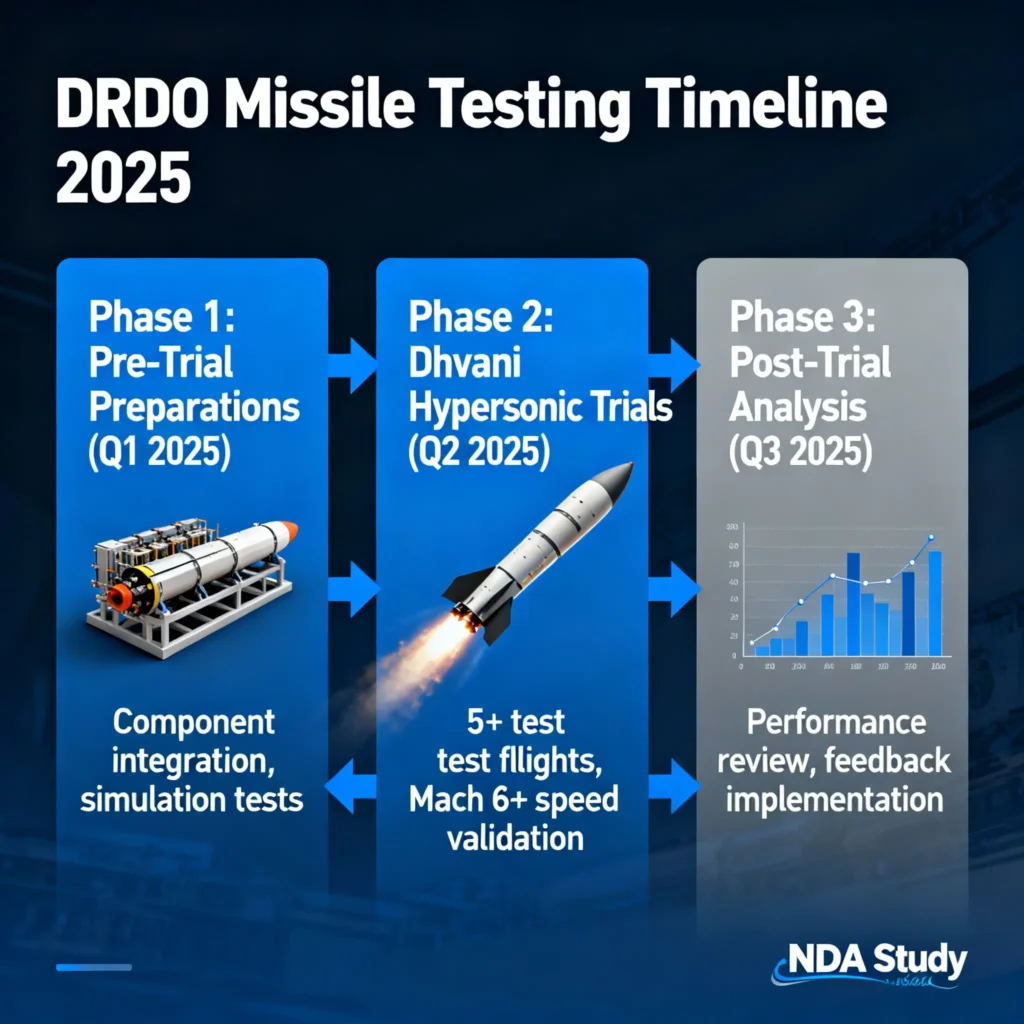
The hypersonic phase, planned for late November through December 2025, will validate scramjet ignition, sustained combustion at Mach 6+, and terminal manoeuvring capabilities. Safety protocols include extensive ground-based scramjet testing—already completed with over 1,000-second continuous runs—followed by controlled atmospheric trials from Dr. APJ Abdul Kalam Island. Each test phase incorporates comprehensive telemetry tracking, heat signature analysis, and precision strike validation against designated targets.
Building on the successful DRDO hypersonic missile trial schedule established through earlier HSTDV demonstrations, Dhvani’s trials will evaluate plasma stealth effectiveness, ceramic thermal barrier performance, and guidance system resilience during communication blackouts. The structured approach mirrors proven methodologies from India’s 2025 hypersonic missile launch preparations, ensuring operational readiness by 2029-30.
Strategic Impact on India’s Defence Posture
Dhvani’s emergence transforms India’s strategic calculus fundamentally, creating unprecedented deterrence capabilities that reshape regional power dynamics across South Asia. The missile’s 7,400 km/h velocity and manoeuvrability establish India as only the fourth nation—after the US, Russia, and China—with operational hypersonic strike capability. This technological leap significantly alters the deterrence equilibrium with both Pakistan and China, compressing enemy reaction windows to under five minutes while rendering conventional missile defence systems largely ineffective. The strategic messaging is clear: India’s defence posture now includes rapid, precision, and nearly uninterceptable strike options against high-value targets across the region.
Geopolitical Significance in DRDO’s Dhvani Hypersonic Missile Test 2025
The future of India’s hypersonic weapons extends far beyond regional deterrence, positioning New Delhi as a credible hypersonic power alongside established players. Dhvani creates a technological gap over Pakistan, which relies primarily on conventional ballistic missiles and early-stage Chinese hypersonic transfers that Beijing has reportedly denied. Against China’s DF-ZF and DF-17 systems, Dhvani helps bridge India’s hypersonic deficit while demonstrating indigenous capability that reduces dependence on foreign technology. The missile’s strategic significance lies in its ability to target critical command centres, nuclear infrastructure, and mobile assets within 2,000+ kilometre ranges. As noted by the NDA Study defence analysis, this position enables India to maintain strategic autonomy while deterring two-front conflict scenarios through credible hypersonic retaliation capabilities.
Integration with the Armed Forces and India’s Hypersonic Weapon Deployment
The DRDO Dhvani test validates integration across multiple launch platforms, including mobile TELs, naval vessels, and potentially air-launched variants from Rafale or indigenous fighter aircraft. The Armed Forces have expressed strategic requirements for 500+ hypersonic missiles by 2030, with Dhvani forming the cornerstone of Project Vishnu’s 12-variant hypersonic arsenal. Deployment strategies emphasise rapid response, with systems positioned for both strategic deterrence and tactical battlefield superiority. Integration includes advanced command-and-control networks, real-time targeting updates, and coordinated multi-domain operations that maximise Dhvani’s precision strike potential while maintaining nuclear and conventional flexibility across India’s tri-service requirements.
Technical Challenges & Solutions
Sustaining Dhvani flight performance at Mach 6+ demands breakthroughs across thermal management, guidance precision, and advanced materials. At hypersonic speeds, aerodynamic heating can exceed 2,000°C, threatening structural integrity and onboard electronics. To counteract this, DRDO has developed multilayered ceramic matrix composites and active cooling channels within the leading edges, ensuring heat is dissipated efficiently. Precision guidance through plasma-induced ionised airflow requires hardened avionics and AI-driven control algorithms capable of real-time trajectory corrections despite severe signal attenuation. Materials science advances include ultra-high-temperature alloys and carbon–carbon composites that retain strength under extreme thermal loads.
Key Engineering Hurdles:
- High-Temperature Thermal Protection: Designing ablative and reusable heat shields to manage Mach 6+ heating without excessive weight.
- Guidance & Control Under Plasma Interference: Ensuring reliable inertial navigation and AI-based corrections when RF signals are disrupted.
- Materials Durability: Developing structural materials that withstand cyclic thermal stresses and retain mechanical integrity over repeated flights.
Future Outlook & Upgrade Roadmap
Building on DRDO 2025 missile trials, Dhvani Mk II will feature enhanced propulsion for extended range beyond 2,500 km, advanced stealth coatings to reduce radar signature, and modular warhead options for versatile mission profiles. Upgrades include next-gen thermal barrier materials and AI-driven guidance improvements to optimise mid-course corrections under contested environments. An evergreen angle allows continuous content updates as Mk II progresses through development milestones—software-in-loop tests, full-system ground trials, and final flight validations slated for 2027–28. This forward-facing roadmap ensures Dhvani remains at the forefront of India’s hypersonic weapon evolution, with periodic insights into production scale-up and integration into tri-service arsenals.
